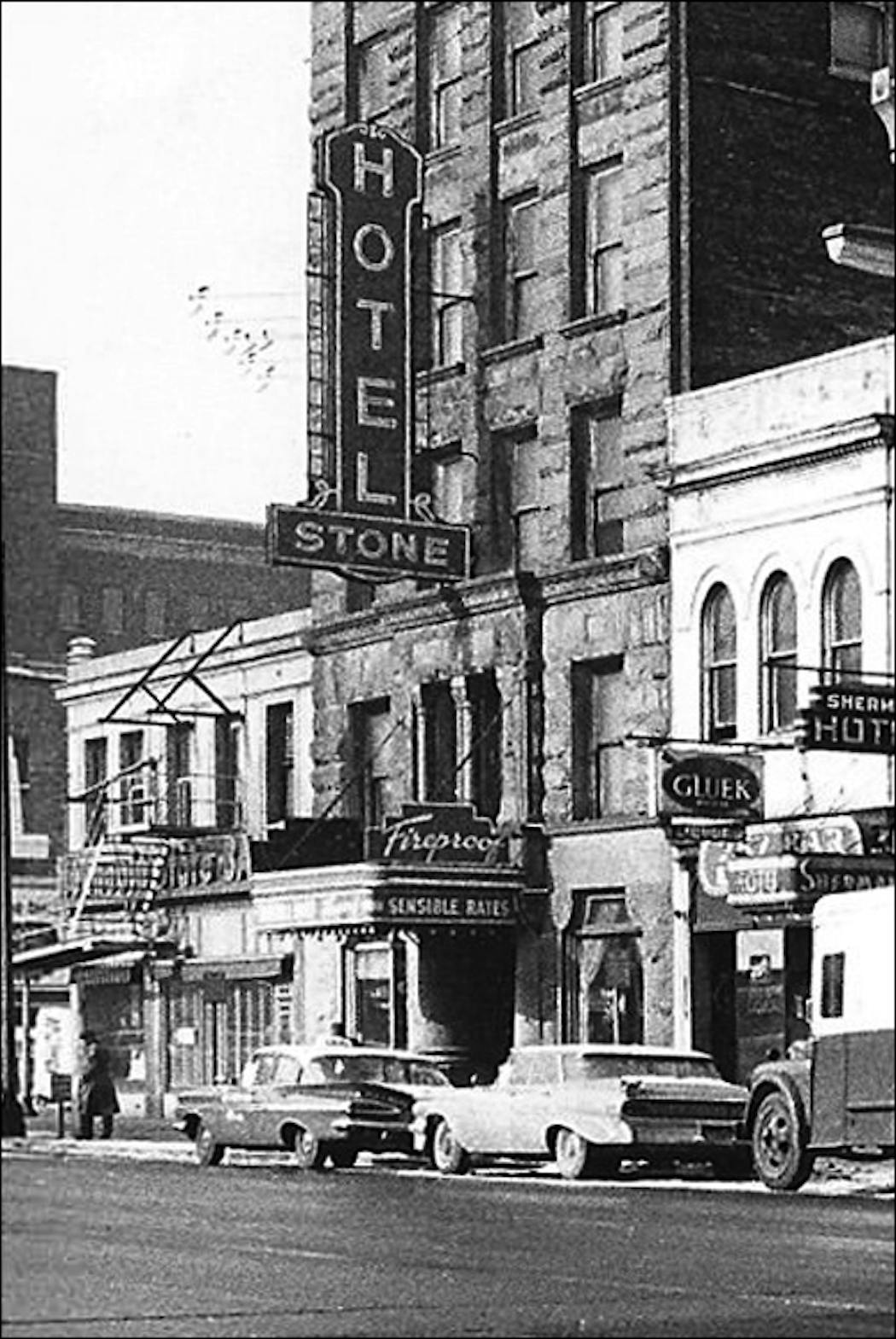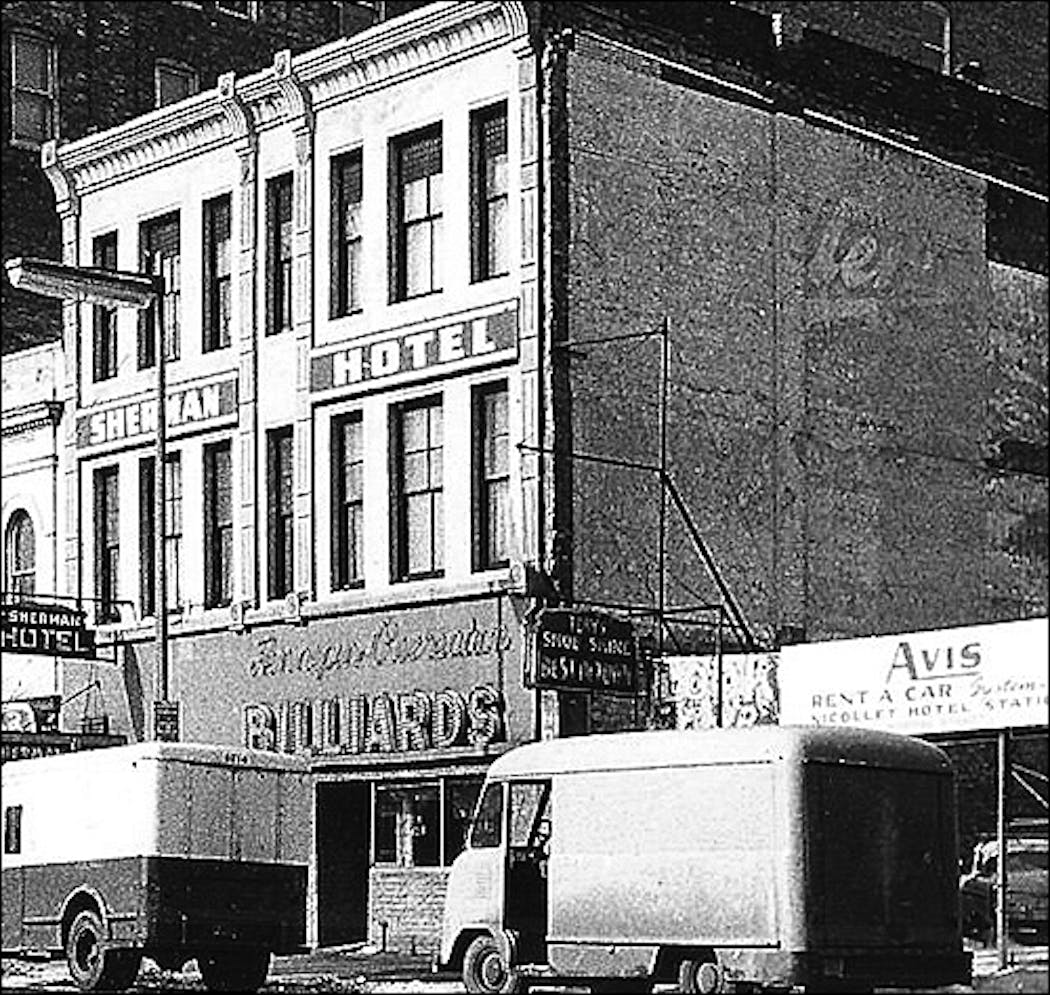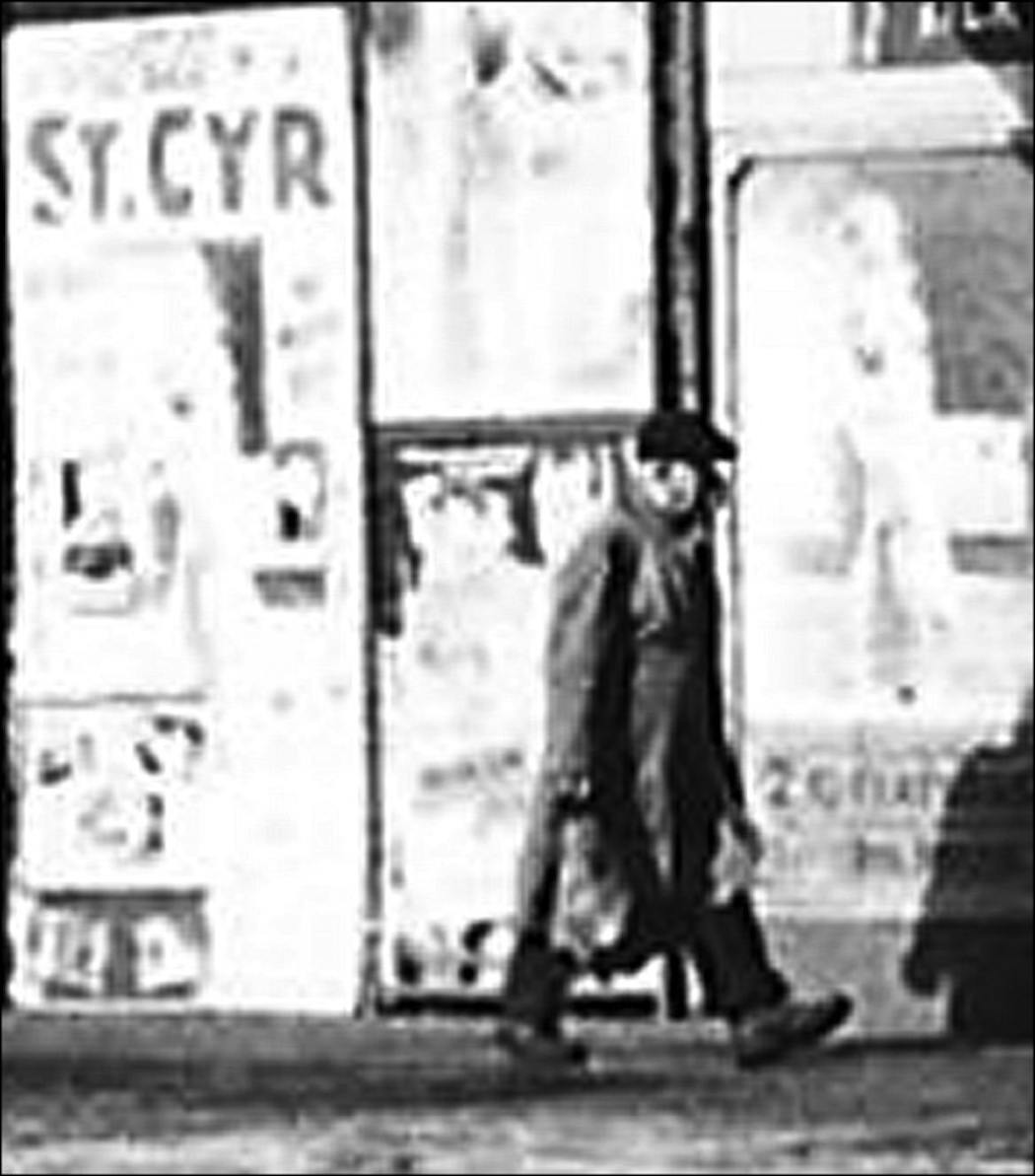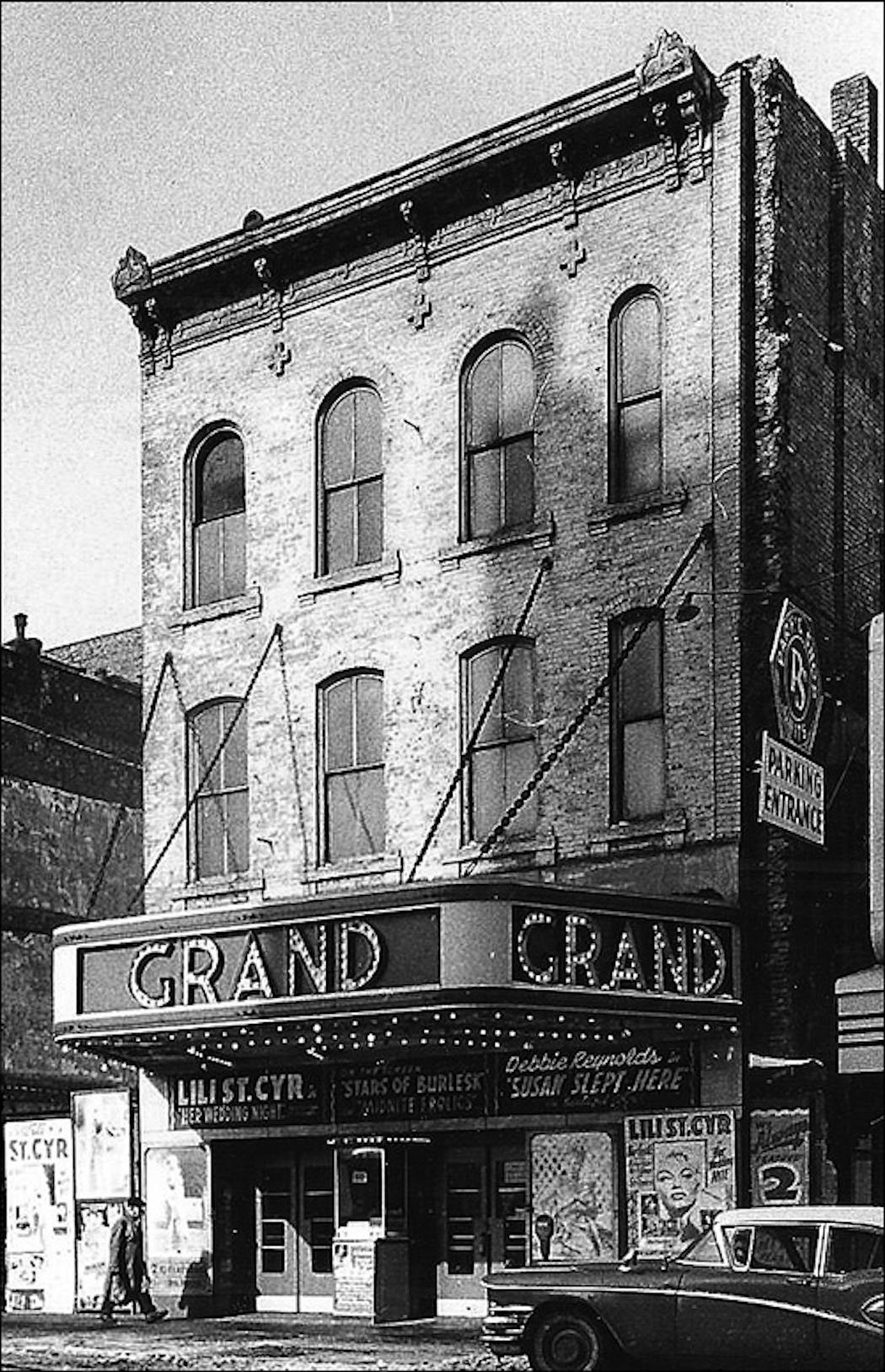In the summer of 1960, the Star Tribune sent photographers to snap a shot of every corner in downtown Minneapolis. This is the third installment in a series that takes a closer look at the pictures, and passes on a few pieces of Minneapolis history.
Something unusual for this entry: a few words from someone who worked in one of the buildings below. It's the 200 block of Hennepin, c. 1960.
Did we locate . . . a desk clerk for the Stone Hotel?
Alas, no. The building seems to have passed without leaving much evidence. No postcards. No matchbooks. It may not have been the sort of place you wanted to let anyone know you'd visited.
It's one of those buildings that would be apartments today, if it had been permitted to live. Or, perhaps, offices, since that's what it was when it opened: the Stone was originally the Sykes Block, and it was designed by Warren H. Hayes, a noted Arts and Crafts-style architect of churches both in the Twin Cities and around the country. Hayes died in 1899 -- the year the Sykes block was completed.
On the corner, the sign says BAR. In happier times it was a hamburger joint with a sign that said GOOD FOOD FOR GOOD HEALTH, but BAR was what the neighborhood apparently wanted.
The entire block looks like it would fall down or burn up, and you can understand why there wasn't a great outcry when it was slated to be razed.
Another flophouse:
The Sherman Hotel looks like the place you'd go after the Stone kicked you out. Billiards on the first floor.
Tony's tiny Shoe Shine was next door -- and if you're wondering whether we spoke to Tony, no. Too bad; he might have explained the mystery of that sign on the wall of the Sherman. Looks like half of a Miller Beer ad. The MIL part isn't visible. The parking lot below -- it's an Avis operation -- was once the home of a rather tall building, seen in the background of this MHS image.
If those ghost signs were painted after the building was demolished, they deteriorated rather quickly -- unless they were painted before, in the early part of the century, and covered up by new construction. But then they'd look fresher.
Some mysteries can't be answered. Like the identity of this guy.
A citizen walking along Hennepin, heading for the girly show. Because they were showing a Lil St. Cyr nudie feature at ...
The Grand.
The history for this theater is ... confusing. Movie-theater.org says its date of construction is unknown, and was named the Mazda for just a year before becoming the Savoy in 1911. Dave Kenney's book "Twin Cities Picture Show" says it was built in 1910, and that it ceased operation in 1950. But the marquee shows a sign for "Susan Slept Here," a Debbie Reynolds movie. Perhaps the title sounded salacious if you were drunk enough.
Well, it's the Grand here -- and anything but. You can tell the joint had hit the skids, playing stripper-flicks. XXX it wasn't, though -- you can find Lil St. Cyr's work on YouTube today, and you don't even have to prove you're an adult.
Upon researching the theater, I found some message board comments:
The Grand Theatre was a grind house operating every day from 10:00 am to 11:30 pm. The Grand Theatre specialized in showing burlesque and "girly" films, i.e. "A Night At The Follies", etc.
The author noted that he'd worked there in 1957.
Well. Some dedicated research -- i.e., typing things into the internet and hitting "Enter" -- eventually turned up the author, living in Florida. We'll just call him Richard, since maybe he doesn't want strangers calling up all the time asking questions about old movie theaters.
So what was it like, the Grand?
"It was a two-bit shooting gallery," he said. "A dump." A shooting gallery "One aisle up the middle. It had a translucent glass screen with a rear throw."
(The throw is the distance between the projector and the screen; a rear throw is rear-projection.)
Richard was a union projectionist, and worked the Alhambra, the Crystal, the Grand, the Bijou -- and the big houses as well.
"I sat through about six months of 'The Sound of Music' at the Mann," he said. He also worked at Radio City for a while -- yes, Minneapolis had a Radio City -- and while the venues were plush, he worked the small, unglamorous projection room.
"There were a lot of bookstores in the old bowery. I used to buy books and put a reel in, sit down, read for 20 minutes, then change the reel, then sit down and read again."
Never heard the Gateway district called the Bowery, but that must have been local slang for skid row. Now? High-class living.
Star Tribune fileIf you live in that building and sometimes think you hear bump-and-grind grind music, don't worry. It's just the ghosts of the Grand.
PS: Here's the billboard, if you're interested in old commercial art. Corby's whiskey had a parrot for a mascot, for some reason.







